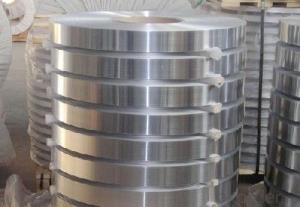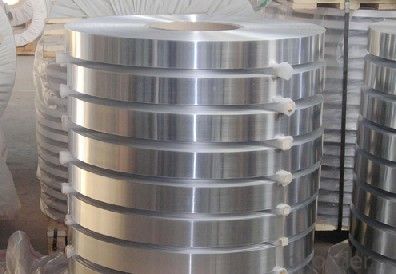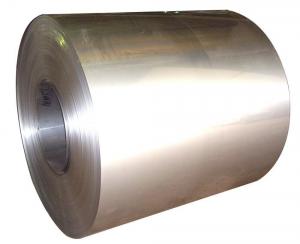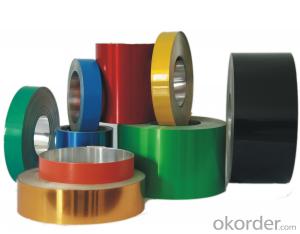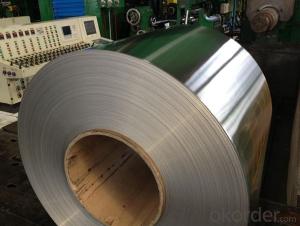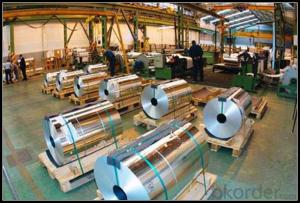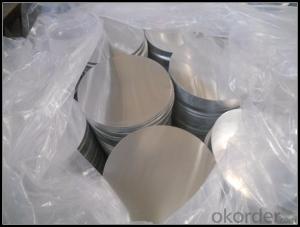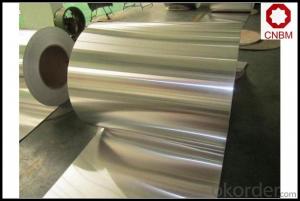Aluminum Step Tile Roofing Sheets - Aluminium Coils for Cutting Strips with Ceiling
- Loading Port:
- Shanghai
- Payment Terms:
- TT OR LC
- Min Order Qty:
- 5 m.t.
- Supply Capability:
- 20000 m.t./month
OKorder Service Pledge
OKorder Financial Service
You Might Also Like
Specification
1.Structure of Aluminium Coils for Cutting Strips with Ceilling
Aluminium Coils for Cutting Strips with Ceilling is one semi-finished aluminium material. This strip can be rolled down to aluminium coil,sheet,circle ect. The alloy AA1050 is widly used in building, industry ect. Its weight is much lower than steel. So many customers choosed aluminium material instead of steel.
2. Main features of Aluminium Coils for Cutting Strips with Ceilling
a.Competitive price---We have our own mills and can produce mill finished aluminium coils, so we can control the production cost better.
b.Professional after-sale service---We have more than 15 years exportation experience and you need not worry about the exporation problems.
c.Fast delivery time---We can control the delivery time within 35 days.
3. Image of Aluminium Coils for Cutting Strips with Ceilling
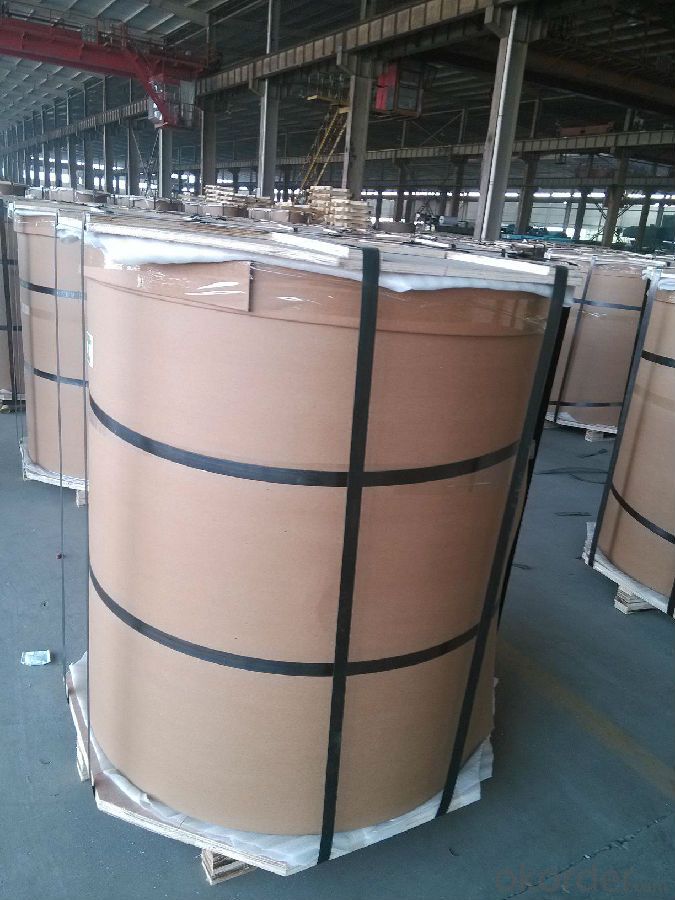
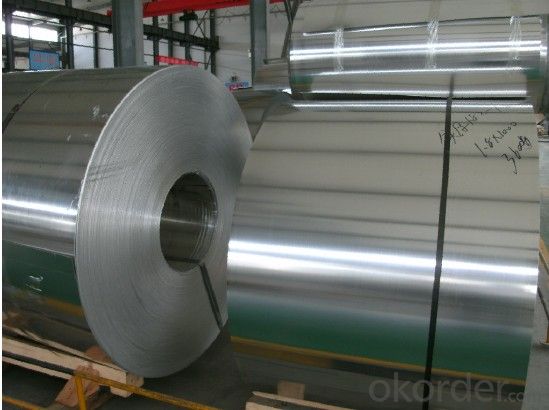
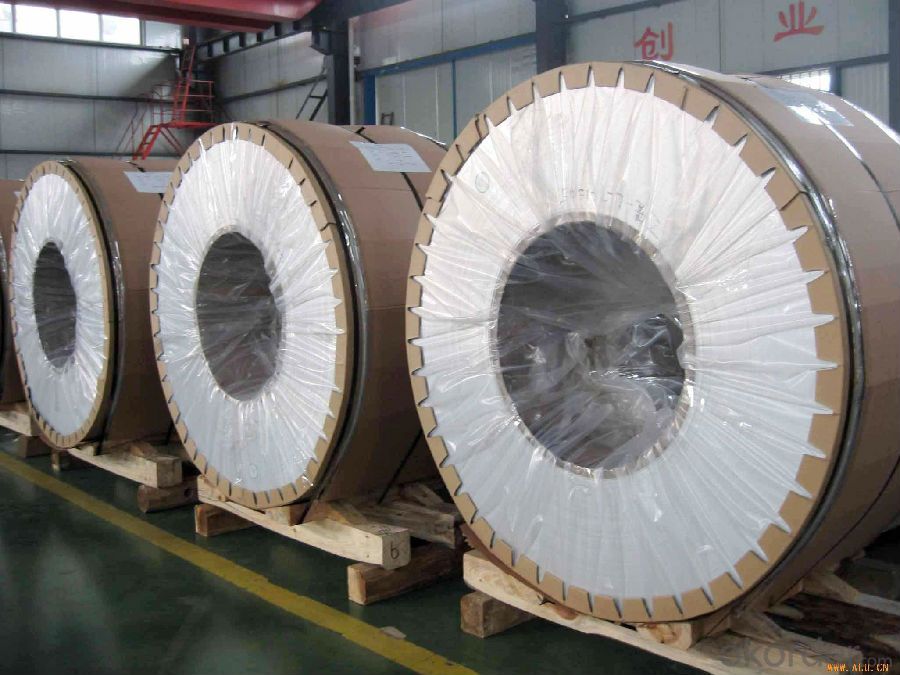
4. Product Specification of Aluminium Coils for Cutting Strips with Ceilling
| Alloy | Temper | Style | Thickness | Width |
| AA1100 | H14 | Direct Casting | 0.2mm-3mm | 1000mm-1500mm |
5.FAQ of Aluminium Coils for Cutting Strips with Ceilling
What is the quality standard?
---Usually our standard is GB3880-2006
What is the largest width?
---It is 2300mm
What is the MOQ?
---Usually we can accept 80 tons.
- Q: Can 101 aluminum sheets be bent or formed into different shapes?
- Yes, 101 aluminum sheets can be bent or formed into different shapes.
- Q: Can aluminum sheets be used for insulation cladding?
- Yes, aluminum sheets can be used for insulation cladding. Aluminum is a popular choice for cladding material due to its durability, lightweight nature, and resistance to corrosion. It acts as a protective layer for insulation materials, providing thermal insulation, weather resistance, and aesthetic appeal to buildings.
- Q: 1mm the aluminum plate is pulled to the height of 45mm. Can I pull it out at 1? How much space should I put in?
- The clearance value of the stretched aluminum plate is =1.3~1.4t (first stretch), 1.15~1.2t (second times stretch), and 1.1t (last stretch). The tensile properties of aluminum sheets are inferior to those of low carbon steel, and they are easily broken when stretched. The tensile height 45mm depends on the diameter of the drawing piece. A cylindrical part of a large cross-sectional area from a material to a small cross section is called a tensile coefficient. That is, the ratio of the cross-sectional area to the cross-sectional area before stretching, i.e., m=A0/An-1. For cylindrical parts, m1=d1/D0, the coefficient of the first stretch can be around 0.5, i.e., the diameter after the first stretch is 1/2 of the blank diameter before the drawing. In the future, the tensile coefficients are usually around 0.7~0.8. The calculation of drawing blank, roughly calculate the blank size according to the principle of equal area of the blank before and after the drawing.
- Q: Are aluminum sheets suitable for food processing equipment?
- Yes, aluminum sheets are suitable for food processing equipment. They are widely used in the food industry due to their excellent heat conductivity, corrosion resistance, and easy maintenance. Additionally, aluminum is non-toxic and does not react with food, making it a safe and hygienic choice for food processing equipment.
- Q: Can aluminum sheets be used in outdoor environments?
- Yes, aluminum sheets can be used in outdoor environments. Aluminum is highly resistant to corrosion and is known for its durability, making it a suitable material for various outdoor applications such as roofing, siding, and signage. Additionally, aluminum sheets can withstand exposure to weather elements like rain, sunlight, and temperature fluctuations, making them an excellent choice for outdoor use.
- Q: Consider an aluminum wire of diameter 0.580 mm and length 28.0 m. The resistivity of aluminum at 20.0°C is 2.82 10-8 Ω · m.(a) Find the resistance of this wire at 20.0°C. ___________Ω(b) If a 9.00-V battery is connected across the ends of the wire, find the current in the wire. __________A
- Resistivity Of Aluminum Wire
- Q: Are aluminum sheets suitable for harsh weather conditions?
- Aluminum sheets are highly suitable for harsh weather conditions due to their exceptional properties. Aluminum is a lightweight yet durable material that offers excellent resistance against corrosion, rust, and UV radiation. This makes it particularly resilient against the damaging effects of extreme weather conditions such as heavy rain, snow, high winds, and intense sunlight. Furthermore, aluminum has a high strength-to-weight ratio, allowing it to withstand the pressure exerted by severe weather without sustaining significant damage. Additionally, aluminum sheets can be coated with protective finishes such as anodization or powder coating, further enhancing their ability to withstand harsh climates. Overall, aluminum sheets are an excellent choice for applications requiring resilience in harsh weather conditions.
- Q: This question asks about the influence of aluminum sheets on the thermal insulation properties of a building.
- <p>Aluminum sheets, due to their high thermal conductivity, can actually reduce the insulation of a building if not properly used. They can conduct heat quickly, which means that they may transfer heat from the outside to the inside or vice versa, depending on the temperature difference. This can lead to increased energy consumption for heating or cooling. However, when used as a reflective barrier in combination with proper insulation materials, aluminum sheets can help reflect heat and improve insulation by reducing heat transfer. It's crucial to use aluminum sheets correctly and in conjunction with other insulating materials to achieve optimal thermal performance in buildings.</p>
- Q: What oil does the aluminum plate stretch with?
- There are professional tensile oil, you can ask to pull the rice cooker liner manufacturers know, if not a lot of production, you can use peanut oil first try, the effect barely enough!
- Q: What are the different alloys used in aluminum sheets?
- There are several different alloys used in aluminum sheets, each with its own unique properties and characteristics. Some of the commonly used alloys are: 1. 1100: This alloy is known for its excellent corrosion resistance and high electrical conductivity. It is often used in applications requiring a high level of formability and weldability, such as food packaging and electrical conductors. 2. 3003: This alloy is widely used in various applications due to its good formability, moderate strength, and excellent corrosion resistance. It is commonly used in cooking utensils, chemical equipment, and general sheet metal work. 3. 5052: This alloy is known for its high strength and good corrosion resistance. It is often used in marine applications, as well as in aircraft fuel tanks and automotive parts. 4. 6061: This alloy is one of the most versatile and widely used aluminum alloys. It offers excellent corrosion resistance, good weldability, and moderate strength. It is commonly used in structural components, such as frames and railings, as well as in automotive parts and aerospace applications. 5. 7075: This alloy is known for its high strength-to-weight ratio and excellent fatigue resistance. It is often used in applications requiring extreme strength, such as aircraft and aerospace components, as well as in high-performance sporting goods. These are just a few examples of the many different alloys used in aluminum sheets. The choice of alloy depends on the specific application requirements, such as strength, corrosion resistance, formability, and weldability.
Send your message to us
Aluminum Step Tile Roofing Sheets - Aluminium Coils for Cutting Strips with Ceiling
- Loading Port:
- Shanghai
- Payment Terms:
- TT OR LC
- Min Order Qty:
- 5 m.t.
- Supply Capability:
- 20000 m.t./month
OKorder Service Pledge
OKorder Financial Service
Similar products
Hot products
Hot Searches
Related keywords
